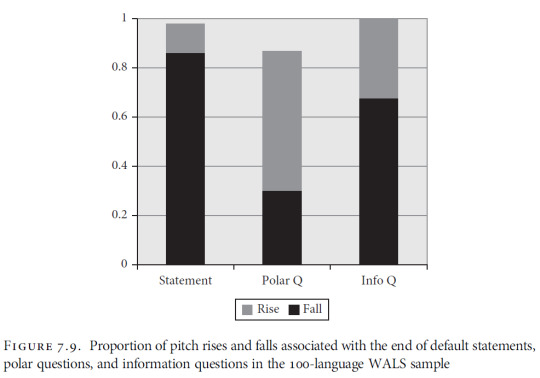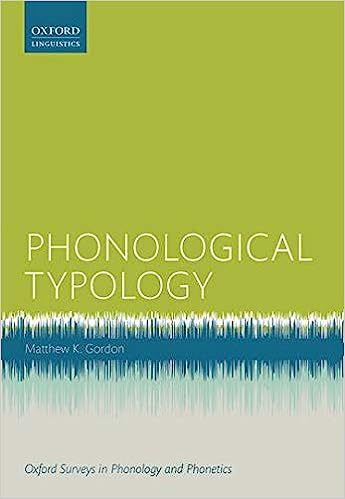#Intonation
Explore tagged Tumblr posts
Text
Writing Dialogue: Functions of Intonation

Intonation - the contrastive use of pitch in speech.
Emotional - Intonation’s most obvious role is to express attitudinal meaning – sarcasm, surprise, reserve, impatience, delight, shock, anger, interest, and thousands of other semantic nuances.
Grammatical - Intonation helps to identify grammatical structure in speech, performing a role similar to punctuation. Units such as clause and sentence (§16) often depend on intonation for their spoken identity, and several specific contrasts, such as question/statement, make systematic use of it.
Informational - Intonation helps draw attention to what meaning is given and what is new in an utterance. The word carrying the most prominent tone in a contour signals the part of an utterance that the speaker is treating as new information: I’ve got a new pen, I bought three books.
Textual - Intonation helps larger units of meaning than the sentence to contrast and cohere. In radio news-reading, paragraphs of information can be shaped through the use of pitch. In sports commentary, changes in prosody reflect the progress of the action.
Psychological - Intonation helps us to organize speech into units that are easier to perceive and memorize. Most people would find a sequence of ten numbers (4, 7, 3, 8, 2, 6, 4, 8, 1, 5) difficult to recall; the task is made easier by using intonation to chunk the sequence into two units (4, 7, 3, 8, 2 / 6, 4, 8, 1, 5).
Indexical - Intonation, along with other prosodic features, is an important marker of personal or social identity. Lawyers, preachers, newscasters, sports commentators, army sergeants, and several other occupations are readily identified through their distinctive prosody.
Source ⚜ More: Writing Notes & References
#intonation#writing notes#langblr#linguistics#writeblr#dialogue#dark academia#spilled ink#literature#writers on tumblr#writing reference#writing prompt#poets on tumblr#poetry#light academia#creative writing#fiction#pierre-auguste renoir#writing resources
93 notes
·
View notes
Text
How well do you pick up on Russian intonation? Here’s a little teaser from my course on mastering Russian intonation! In this audio snippet, you’ll hear the question: 'Сколько здесь итальянцев?'
Listen closely, then pick the correct answer:
Здесь только пять, а там - сорок человек!
Восемь человек.
Итальянцев пять, а все остальные - французы.
What do you think? Drop your guess in the replies—and let me know if you’re intrigued by Russian intonation!
15 notes
·
View notes
Text
Rare intonation patterns in the world's languages
Chitimacha is one of the rare languages which uses rising intonation for statements and falling intonation for questions and commands (Swadesh 1946: 317).
This chart using languages from the World Atlas of Language Structures shows just how infrequent this pattern is in the world’s languages (Gordon 2016: 245).

Interestingly, the nearby Chickasaw language also has this unusual pattern, even though the two languages are unrelated (Gordon 2016: 245).

You can learn all about the sound systems of the world’s languages in the excellent book Phonological typology. (The book is aimed at linguists rather than a general audience. An intro linguistics class is probably a prerequisite for the book.)

References
Dryer, Matthew S. & Haspelmath, Martin (eds.). 2013. The world atlas of language structures online. https://wals.info/.
Gordon, Matthew K. 2016. Phonological typology (Oxford Surveys in Phonology & Phonetics 1). Oxford University Press.
Swadesh, Morris. 1946. Chitimacha. In Harry Hoijer (ed.), Linguistic structures of Native America, 312–336. Viking Fund.
#intonation#linguistics#language#lingblr#langblr#Chitimacha#Chickasaw#Native American#Native#Indigenous#phonology#typology
109 notes
·
View notes
Text
Fumi (Speaking Japanese Naturally)
Identifying particles, verbs, and contextual clues is crucial for parsing complex Japanese sentences. While written Japanese uses syllabaries like Hiragana, the basic rhythmic unit is the mora instead of the syllable. Properly understanding mora timing is essential for natural Japanese pronunciation and mastering aspects like poetry and pitch accent. Correct intonation and pitch accent patterns are also important for comprehension. Intonation rises after the first mora and falls with each accented mora until the end. Each word has a specific pattern of higher and lower pitch-accented moras. Incorrect pitch can completely change the meaning of some words. Therefore, in addition to word order and particles, it is important to pay attention to the characteristic patterns of high and low pitches in Japanese to achieve full understanding.
Parsing Sentences (May 2024)
youtube
Japanese Pitch Accent (April 2021)
youtube
Japanese Intonation (August 2021)
youtube
Thursday, May 23, 2024
7 notes
·
View notes
Text
Remembrance is Rhyme and Intonation
It’s funny how the same word can mean different things in English like, ‘Spam’. Some will think of Spam as the canned meat invented in 1937, which came from a shortening of the term, ‘spiced ham’, and because it was processed, was excluded from rationing in World War II. For a generation, Spam became one of the staple foods in their diet. Some joked that the letters stood for, “Something Posing…
2 notes
·
View notes
Text

Another cover I did for JG back in April :) lool this was a fun one
Spliffy Macdougal is ready to call it quits
Thank you for trusting me with your vision <333
3 notes
·
View notes
Text
Intonation - Joan Brossa - Spain
Translator: Cameron Griffiths (Catalan)
I notice so many changes
in what I feel and what I see,
that if I remember personal
tragedies I light a cigarette
and leave the poem.
5 notes
·
View notes
Text
The intonations of our voice express our philosophy of life, what one says to oneself at each moment about things... As individuals, each of us lives immersed in something more general than ourselves.
from In Search of Lost Time, Book 2: In the Shadow of Young Girls in Flower by Marcel Proust
#in search of lost time#in the shadow of young girls in flower#marcel proust#proust#intonation#voice#expression#philosophy of life#talking to myself#immersion#generalities
2 notes
·
View notes
Text

Okay this really is a really, seriously small thing that happens to have a deep backstory and a reason to thank some of my teachers for whom I'm sure I didn't have enough respect at the time.
Deep breath.
So I'm putting the final touches, the last fixes, on a short project. One of fixes I'm making is to correct a mismatch of a pair of words from an interview. What's happened is that the person speaking paused after the first word... and landed on the second word as if the two aren't connected. Because of the space between the two words, the mismatch of tones, the awkwardness of it doesn't jump out at you. What makes it jump out, though, is that I cut out the space between the words for time and now their awkward pairing shines brightly. And it's my job to make them sound like they belong together.
'Cause I'm an editor like that. ;-)
To match the intonation of the two words, to make their flow sound natural, you have to imagine how the second word should sound.
How it should sound?
I don't know what to tell you. I have a lot of experience with narration and narrators, voice-overs and reads. Enough experience that I know how every part of a sentence should sound. I know how the dynamics of intonation works to create engaging reads. I know how to shape sentences tonally and, in this case, I know how to land the second word.
Which is what brings me to my teachers. My music teachers.
Like, all of them.
You see, while I no longer have spot on perfect pitch built from all my days of choir, I do still have an accurate judgement of the space between notes. And each word of a narration can be mapped onto a note. So when I hear the first word at the point where the narration doesn't sound natural, I know what note that is. When I hear the word that follows, I know what note that is and I can hear it in my head. I also know how that second word should sound and I know what note that is... so now I'm able to judge the musical distance between what the note is and what it should be. I know the distance between the wrong note and the right note.
A whole step, by the way.
A whole step?
Yup. That's the distance between Doh and Rey. It's also the distance between Rey and Me on the doh rey me fa so la ti doh scale you might've learned in grade school or heard Julie Andrews sing once upon a time in The Sound of Music.
Fortunately for me, the way my edit software handles moving pitch up and down is by half steps (the distance between Me and Fa, for example). So to move the tone a whole step down you adjust it in that direction by two semi-tones. And the fact I know that without hesitation is knowledge I can only attribute to my music teachers.
All of them.
Why? Because it's their teaching I internalized even though I wasn't trying to internalize those lessons. Heck, I was such a squirrelly kid I'm pretty sure I wasn't even trying to learn. I was definitely not the most focused and dedicated student. For sure I wasn't the most disciplined or respectful or even grateful.
However.
Given the multitude of internalized music skills with which I entered into my profession, I definitely didn't credit my teachers at the time with the respect I owe them now: My grade school music teacher whose name I forgot :-(, Mr. Nelson my Jr. High School choir teacher, Mr. Cathey my High School choir teacher, Mrs. Shelley my grade school piano teacher, and George Fiore my boy choir director who was a virtuoso pipe organist who also happened to be the chorus master of the Seattle Opera at the time.
I didn't credit them at all when I was being taught by them. I'm sure I drove them plenty to distraction for which I am only presently and truly sorry.
It's actually a feature of my current professional life that I'm able to attribute the specific skills I put in play at the moment I put them in play as if my music teachers had autographed those moments forward in time.
So yeah.
It was really, really, a seriously tiny moment in the edit suite yesterday after which I knew exactly to whom I could attribute the ability I wielded effortlessly just then.
My music teachers.
All of them.
Good grief. Thank you all so, so much.
😁
#music#music theory#pitch#pitch shifting#editing#post-production#scales#music teachers#teachers#teaching#lessons#practice#experience#skill#ability#george fiore#narration#read#voice#sentence dynamics#intonation#verbal dynamics#inflection#cadence
0 notes
Text

Neuerscheinung im Verlag "Buch und Note"
Torsten Laux Er ist die rechte Freudensonn
Intonation - Gemeindebegleitung - Kanon
Weitere Informationen: http://www.buch-und-note.de/rubriken/orgel_solo.html#1024-04
Erhältlich sind die Noten
beim Verlag (http://www.buch-und-note.de)
im Online-Shop des Verlages (https://dkunert.de/Laux-Torsten-Er-ist-die-rechte-Freudensonn
im Notenkeller in Celle (http://www.notenkeller.de)
bei jedem gut sortierten Buch-und Notenhändler
#orgel#celle#noten#Neuerscheinung#Daniel Kunert#Buch und Note#Torsten Laux#Advent#Intonation#Gemeindebegleitung#Musik#Gottesdienst#Kirchenmusik#Kanon#Freudensonn
0 notes
Text
Did you study Russian intonation?
Intonation is an integral part of the Russian language. Intonation is meaningful, and mastering it is as important as mastering grammatical forms.
I am not sure if intonation is taught in formal Russian as a foreign language courses or if it is covered in major Russian textbooks. Please help me understand if Russian intonation is a blind spot.
18 notes
·
View notes
Text
The Importance of Intonation when Speaking
youtube
View On WordPress
0 notes
Text
1 note
·
View note
Text
Just heard the performance of the national anthem by Ingrid Andress (who?) from last night. Good lord!
0 notes
Text
20. Intonation-Deidesheimer Kunsttage: Deidesheim vom 19. bis 28. April 2024

View On WordPress
#20.Deidesheimer Intonation#Deidesheim#Friederike Zeit Narum#Handwerkskunst#Hanna Miadzvedzeva#Heidi Henze-Bach#international#Intonation#Johannes Nagel#Juan Orti#künstlerische Keramik#Keramik#Kunst#Svein Narum#Symposium#Torbjørn Kvasbø
0 notes